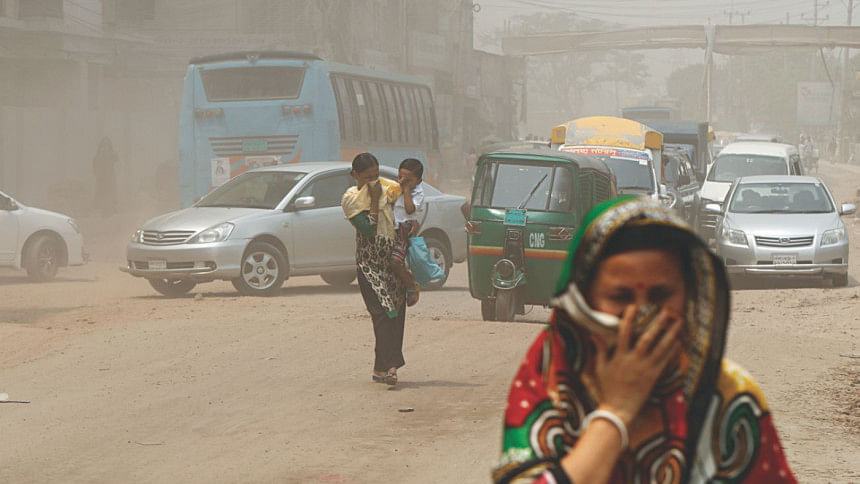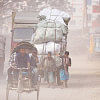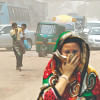Air Pollution in Bangladesh: Steep rise continues

Bangladesh has experienced a sharp increase in air pollution since 2010 as 81 percent population are exposed to household air pollution from solid fuel burning, says a new global study report.
“Pakistan, Bangladesh and India, on the other hand, have experienced the steepest increases in air pollution levels since 2010,” adds the report styled Global Air/2018 Report published on Tuesday by the Health Effects Institute (HEI).
More than 95 percent of global population are breathing unhealthy air and the poorest nations are the worst victims, according to the report, which further says long-term exposure to air pollution contributed to an estimated 6.1 million deaths around the globe in 2016.
The report also takes into account those who are exposed to solid fuel burning, typically used for cooking or heating their home, that results in indoor air pollution.
“It is true that the air quality has fallen in last few years. The major sources of outdoor air pollution in Bangladesh are brick kilns and development works, especially construction works,” Ziaul Haque, director of Air Quality at Department of Environment, told The Daily Star yesterday.
Currently, there are more than 8,000 traditional brick kilns active in Bangladesh which are considered as the major sources of air pollution in the country.
Haque said dust pollution has emerged as a major problem in recent times and it turns worst in winter.
“We do not have that much industrial pollution. Some cement, steel and re-rolling factories are the sources of air pollution apart from brick kilns and construction works,” the director informed.
He, however, said various steps were taken to reduce indoor air pollution as 20 lakh improved cook stoves have already been distributed among users. “We expect that the indoor pollution will reduce by 50 percent very soon.”
In 2016, 2.5 billion people -- one in three of global citizens -- were exposed to air pollution from solid fuel like wood or charcoal.
The report says exposure to air pollution led to strokes, heart attacks, lung cancer and chronic lung diseases, causing many of those premature deaths.
It further says air pollution is the fourth-highest cause of deaths among all health risks globally, coming in below high blood pressure, diet and smoking.
Most of those affected live in low- and middle-income nations in Asia and Africa where they face air pollution both inside and outside their home.
Abul Kalam Azad, director general of Directorate General for Health Services, said Bangladesh is a densely populated country where huge development works have been taking place for long.
“Air pollution is the cost of development works along with some other reasons. It has become one of the major causes of deaths in Bangladesh,” he added.
More than 37,000 Bangladeshis die annually from diseases related to this pollution, according to the World Health Organization.
Stroke and ischemic heart diseases are the major factors in the deaths, nearly 21,000, while acute lower respiratory infection, chronic obstructive pulmonary disorder and lung cancer contribute to the rest of the deaths, according to the UN agency.
In April 2017, the WHO reported that environmental pollutants cost an estimated 1.7 million lives among children under five.

 For all latest news, follow The Daily Star's Google News channel.
For all latest news, follow The Daily Star's Google News channel. 








Comments